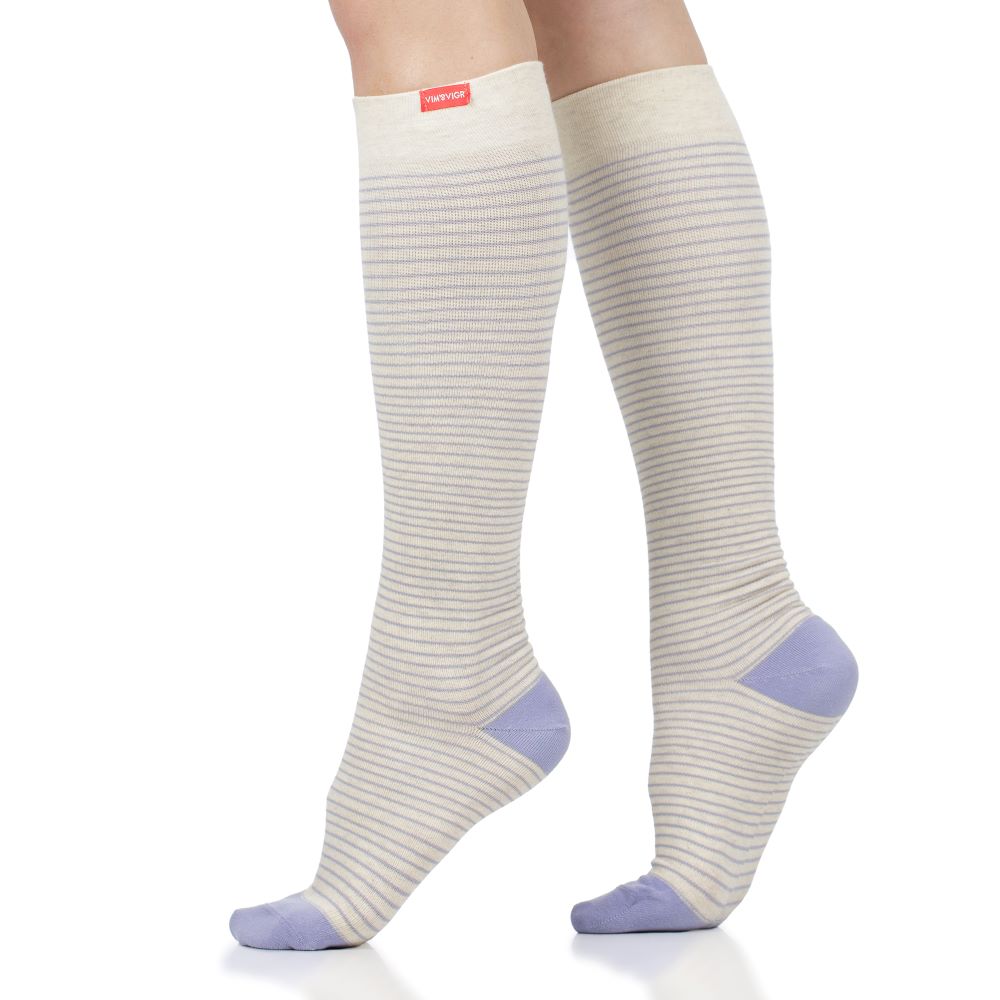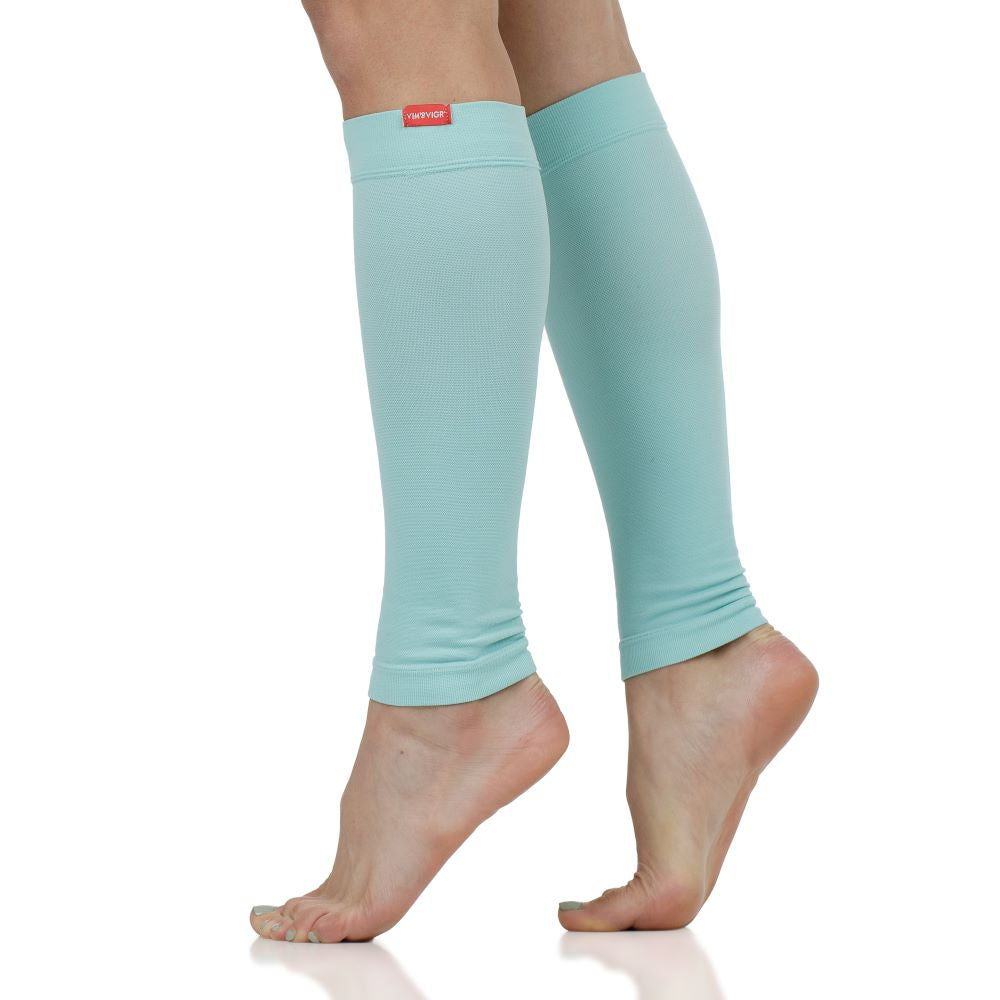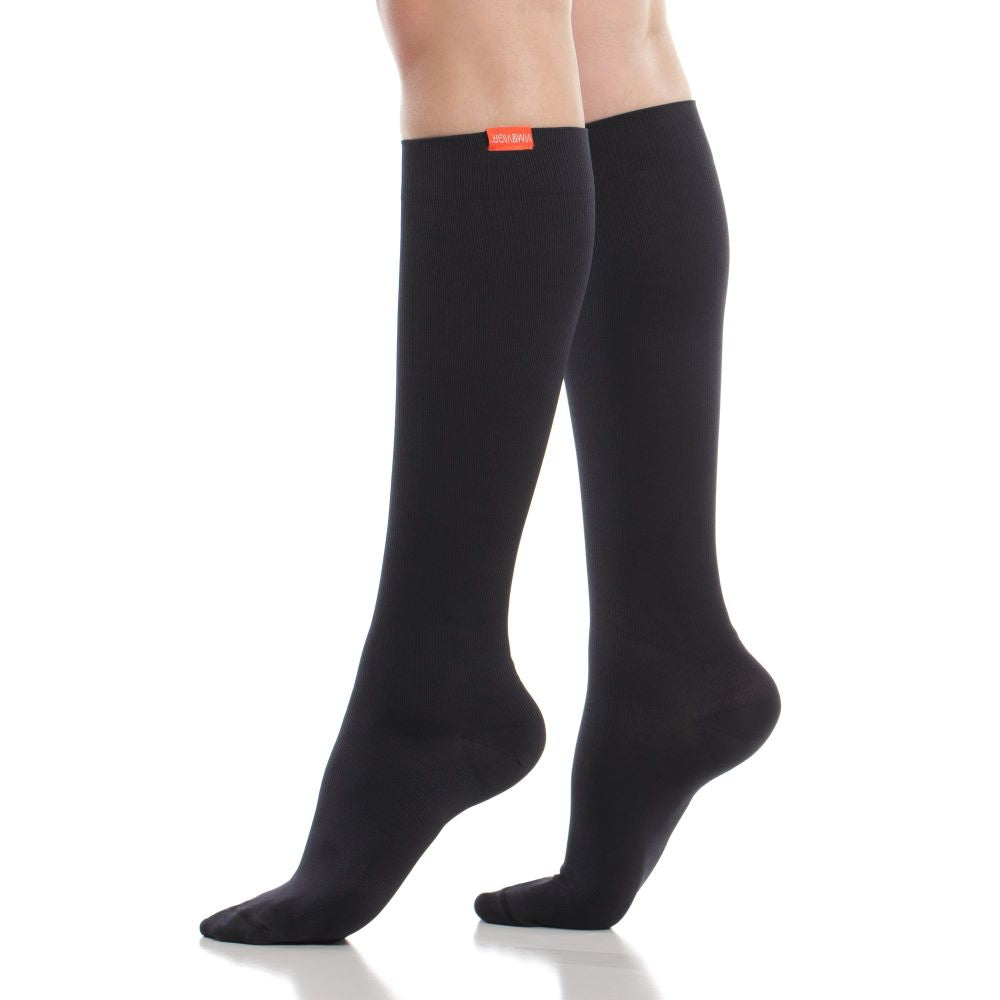Diabetic Socks vs Compression Socks: Are They the Same Thing?
While many people live with diabetes and suffer its side effects on their feet and lower limbs, only some will need diabetic socks to protect them. At the same time, you will hear a lot about the link between these socks and compression socks such as you may find nurses and other professionals wearing, when they stand for long periods of time.
Are diabetic socks and compression socks the same thing? How do they differ from regular socks? What are the differences and who needs to use which type of socks, for what benefits?
Diabetic socks are not necessarily the same as compression socks, simply because the term “compression socks” or “compression tights” applies to a much wider range of items you can wear on your lower limbs. You can definitely get benefits from wearing compression socks if you suffer from diabetes, however.
Read on to get an overview of the differences between these types of socks, what are the common traits of each, and the benefits of wearing any type of compression garment if you suffer from diabetes.
Are Diabetic Socks the Same Thing as Compression Socks?
In short, diabetic socks and compression socks are different types of protective garments for your feet and lower limbs, responding to different needs. However, some compression socks can be beneficial for those suffering from diabetes, although the term “diabetes socks” should not be confused with “compression socks.”
The main reason these socks are not the same thing is their application and functionality. Diabetic socks, as we’ll cover below, are designed to respond to diabetes patients’ need for protection from injuries such as blisters, stings, and other risks. They are also worn to relieve pressure and improve blood circulation (where you could confuse them with compression socks), but they are typically prescribed by a doctor with different goals than if you simply wanted to purchase a pair of compression socks.

However, there is one area where diabetic patients can benefit from compression socks: diabetic neuropathy and specifically swelling of the lower limbs.
What Is Neuropathy?
Peripheral neuropathy refers to weakness, numbness and pain caused by damage to the nerves outside the brain spinal cord. Neuropathy is responsible for nerve damage in the legs and feet when it occurs on patients with diabetes and, as 60-70% of diabetics develop some nervous system damage, diabetes and neuropathy have commonly been associated.
While neuropathy – and diabetes – needs to be treated by addressing the underlying causes, easing its impact on the body is an important step to making a patient’s life better. Compression socks can help with neuropathy, through the pressure they exert on the lower limbs, relieving pain and discomfort. They also provide some important protection for the lower limbs.
Diabetic Socks vs Compression Socks
We know now that there are some differences and some similarities between diabetic socks and compression socks more broadly. Let’s have a look at these in more detail.
Similarities
Both compression and diabetic socks can be medically prescribed for a number of conditions (especially the compression garments). They both provide some sort of comfort and relief from pain and/or numbness, depending on the severity of the wearer’s condition. Moreover, they both provide important protection from outside injuries (although this is achieved differently for each sock type).
The latter can be a crucial reason for wearing diabetic or compression socks. By preventing the legs and feet from getting cut, bruised, or stung, either type of sock can reduce the risk of other infections or gangrenes from developing in diabetes patients.
Differences
The fundamental difference between these two types of socks is the way they fit. While diabetic socks are loose-fitting and non-binding, compression socks exert a gradual level of pressure onto the lower limbs.
Diabetic socks:
- Protect the feet and lower limbs from hot or cold conditions when patients cannot feel these adequately (a side effect of nerve damage caused by diabetes);
- Are designed to keep feet dry;
- Work to increase blood circulation;
- Are prescribed to diabetes patients who have foot problems – in other words, not every diabetic needs to wear diabetic socks;
- Are made with as few seams as possible and from fine-textured fabrics with antimicrobial properties, such as bamboo and wool.
Some diabetes socks have additional features, like smart technology that tracks foot temperature through sensors in order to alert the patient if an ulcer was forming on their foot, via an app.
On the other hand, compression socks can be medically prescribed or simply worn for the pain and swelling relief they provide, in daily life or by athletes or professionals who find them useful on long days standing up or sitting down for extended periods of time.
Compression socks:
- Exert pressure of various levels on your lower limbs, including shins and calves;
- Are made from a variety of materials, including cotton, moisture-wicking nylon, and merino wool;
- Can be worn as part of sporting activities such as running and hiking, and have a beneficial effect on blood circulation during long days out;
- Are not waterproof – instead, the materials that compression socks are made from will allow water to reach your feet, but also to evaporate quickly, thanks to moisture-wicking properties;
- Also help promote blood flow and avoid circulatory problems, but are not designed for specific injury prevention and do not have additional medical features like temperature sensors.
Why Should Diabetics Wear Compression Socks?
Depending on your medical condition, your doctor will recommend wearing diabetic socks, compression socks, or nothing in particular. There is a wide range of foot care and foot conditions in connection with diabetes, so this can be a highly personal matter to approach.
However, there are some known cases in which diabetics should wear compression socks. These include those suffering from diabetes-related edema, since mild-compression diabetic socks (combining the two types!) have been shown to minimize edema-related swelling.
There is no need to categorize the socks as “diabetic only” and “compression only”. The only key difference to keep in mind is that compression socks are binding, with the aim of pooling blood to your heart. They’ll reduce the risk of swelling in your lower limbs and relieve pressure below the knee. On the other hand, specific diabetic socks are non-binding, aiming to improve blood circulation in the legs. They also protect from humidity, cold, and injuries, in a more dedicated, specific way, for those suffering from diabetes.
Therefore, diabetics suffering from neuropathy or from edema can benefit from both diabetic socks and from compression socks. The level of pressure should be adjusted depending on comfort and the diabetes condition. Moreover, diabetics using good-quality compression socks will benefit from a level of protection from injury and – if wearing merino wool socks – from their moisture wicking properties.
The Best Compression Socks for Diabetics
If you suffer from diabetes, but haven’t been prescribed diabetic socks, you could still benefit from compression socks. This is especially true if you spend a lot of time on your feet, if you’re setting off on a long flight (where you won’t move for an extended period), or if you’re at risk of developing blood clots. If your feet swell, from heat or humidity for example, compression socks are also a great way to reduce these symptoms. Finally, wearing compression socks as a diabetic gives you some injury protection, offering some of the benefits of diabetic socks, too.
To pick the best compression socks for diabetics, consider your familiarity with these types of garments and start with a lower grade of compression to get used to them. Make sure you find the best fitting ones, by trying them first. You may want to choose merino wool or moisture-wicking nylon materials to ensure that your feet stay dry – our merino wool range is ideal for walking, hiking, or just getting through humid conditions while keeping an optimal temperature for your feet.
Regardless of your health conditions, lower compression level socks made from good-quality materials can make you feel lighter, sheltered from injury hazards, and more comfortable, too.


















Great article with lots of information.
thank you
Leave a comment